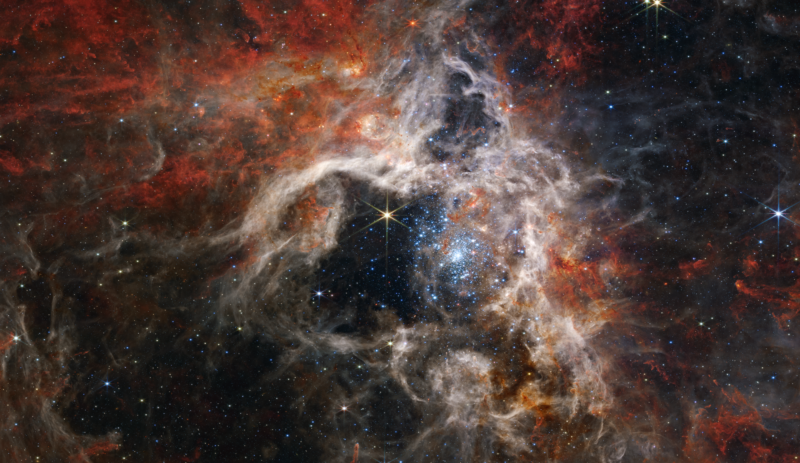
NASA's James Webb Space Telescope continues to provide astronomers with unprecedented views of the Universe.
On Tuesday, the space agency released a mosaic image that shows a panorama of star formation stretching across a staggering 340 light years. Astronomers call the main feature in this image 30 Doradus, but it has a catchier nickname—the Tarantula Nebula—due to its long, dusty filaments.
This stellar nursery is located in the Large Magellanic Cloud, one of the closest galaxies to our own Milky Way at a distance of 160,000 light years. The Tarantula Nebula was already a pretty spectacular feature in telescopes because it's the biggest and brightest stellar nebula in the local neighborhood of galaxies, which includes the Milky Way and Andromeda galaxies.
But Webb brings the nebula into stunning clarity because the telescope observes light in the infrared portion of the spectrum, which is light with a slightly longer wavelength than is visible to the human eye. This allows the telescope to capture light from distant objects that might otherwise be blocked by cosmic dust particles, which are more likely to interfere with light at a shorter wavelength.
As a result, Webb's imaging of the Tarantula Nebula is rather beautiful, revealing tens of thousands of young stars that were previously blocked by cosmic dust.
Astronomers are keen to better understand the process by which stars are formed, which is foundational to grasping the physics of the Universe. Webb's better images and data will provide new insight into this process and show why there is such a multiplicity of different sized stars, with widely variable properties, in our galaxy and beyond.


3175x175(CURRENT).thumb.jpg.b05acc060982b36f5891ba728e6d953c.jpg)

Recommended Comments
There are no comments to display.
Join the conversation
You can post now and register later. If you have an account, sign in now to post with your account.
Note: Your post will require moderator approval before it will be visible.